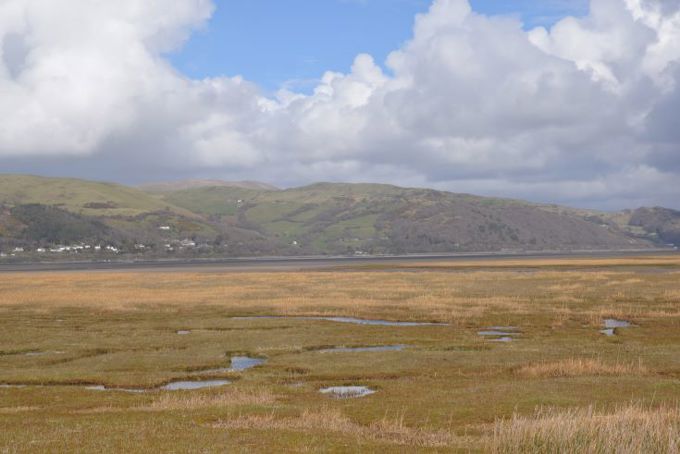
Sackett v. EPA Supreme Court Decision: Clean Water Act Does Not Regulate “Isolated” Wetlands
Clean Water Act and Wetlands
We encourage you to review the podcast entitled “Jim Lang on Sackett v. EPA”, released September 15, 2023, together with this blog article.
My article, posted a few months ago on this blog, described the 50+ year brawl over the power of the EPA and/or the Army Corps of Engineers to control land use decisions through use of the authority of federal wetland regulations, by way of the Clean Water Act (CWA). The “property rights” crowd, joined by the “states’ rights” crowd, both want to narrowly define “waters of the United States” (or WOTUS), that phrase being the jurisdictional reach given to the regulatory agencies when Congress wrote the clean water act. This view, if adopted, would place “isolated” wetlands beyond the reach of the CWA, while allowing the continued federal regulation of wetlands that are “adjacent” to traditional navigable waters.
CWA Requirements & Federal Wetland Regulations
The environmental advocates argue for an expansive definition of WOTUS, which is good for those who unite behind the cause of clean, unpolluted, water but it requires properties located at a distance from the nearest pond, lake or river, to comply with the federal wetland regulations regime, a process that at times can be time consuming, expensive and, in some cases, can lead to cancellation of a project. This latter view would subject both “isolated” wetlands and “adjacent” wetlands to CWA requirements. (For an explanation of the difference between “isolated” and “adjacent” wetlands, read my article published last year in this blog.)
My previous article explained that a case before the U.S. Supreme Court, Sackett v. EPA, would settle the matter notwithstanding the EPA having launched a rulemaking that, when finished, would address the same topic (again!). Late last month the Supreme Court decided Sackett.

Shutterstock: Paul Brady Photography
Sackett v. EPA Supreme Court Decision
The debate in Sackett v. EPA ruling boiled down to a choice. The narrow view was that WOTUS should include only those wetlands that have a “continuous surface connection” to traditional navigable waters. The expansive approach gives EPA and the U.S. Army Corps of Engineers regulatory jurisdiction over wetlands that have a “significant nexus” to traditional navigable waters. The regulatory agencies have used the “significant nexus” approach since 2006, that date being the last time that the Supreme Court spoke to the issue, in the case of Rapanos v. U.S. It is worth noting, though, that the regulatory agencies have used an expansive approach, in one form or another, for most of the 51 years since the clean water act was enacted in 1972, though prior to 2006 these earlier formulations did not use the “significant nexus” label.
Sackett Debate Against the EPA
Sackett framed this debate between the narrow and the expansive interpretation of WOTUS around a one-half acre parcel located 300 feet from Priest Lake in Idaho. The lake is a traditionally navigable body of water. Wetlands characteristics existed at the Sackett parcel in terms of soil hydrology and vegetation yet the wetlands at the Sackett parcel lacked a "continuous surface connection" to Priest Lake. The EPA asserted jurisdiction over the isolated wetland at the Sackett property because it evaluated the parcel has having a “significant nexus” to Priest Lake.
Sackett v. EPA: Supreme Court Rules Unanimously
It is not often that the Supreme Court rules unanimously but, in Sackett, the Court decided 9-0 that the wetlands on the Sackett property were beyond the jurisdiction of the Clean Water Act. The Court found five votes to reject the “significant nexus” test holding instead that only those wetlands with a “continuous surface connection” to a covered waterbody are subject to federal Clean Water Act jurisdiction.
This means that the Sacketts do not need to get a federal wetland regulation permit from the U.S. Army Corps of Engineers in order to develop their one-half acre parcel. According to the Court, even under the narrow interpretation of WOTUS, a lot of wetlands remain subject to clean water act jurisdiction with the combined size of those wetlands being “greater than the combined surface area of California and Texas”.

Shutterstock: Zolnierek
Virginia Wetlands Regulations: What Sackett Means for Virginia Property Owners
The Sackett v. EPA ruling relieves a person who wishes to fill an isolated wetland of the need to obtain a CWA permit from the U.S. Army Corps of Engineers. However, all wetlands in Virginia, even those with no “continuous surface water connection” (e.g. isolated wetlands), are regulated at the state level by the Virginia Water Protection Program. Time will tell whether the Virginia wetlands regulations, administered by the Virginia Department of Environmental Quality, differs in any material respect from the regulatory tendencies of the Army Corps of Engineers.
Conclusion
The attorneys on our Waterfront Property Law Team have strong connections, significant legal experience and go the extra mile for our clients to get the job done, to include successfully defending an important wetlands permit in federal court in Norfolk. A few years ago one of our attorneys kicked off his shoes and got in the water to fend off a criminal enforcement action. The attorney got soaked in the process, but he protected our client from facing criminal charges. Contact us to get the help you need from attorneys who go the extra mile to serve you.
